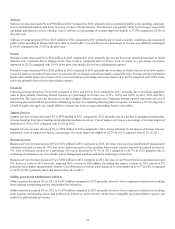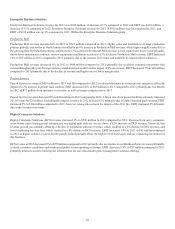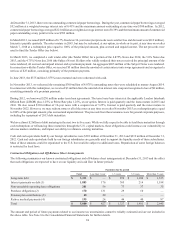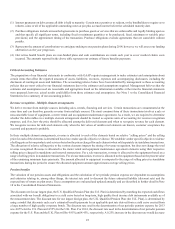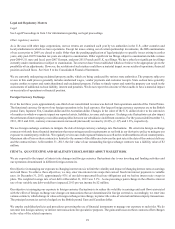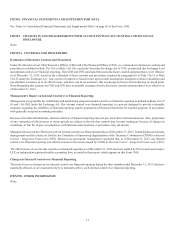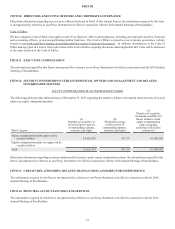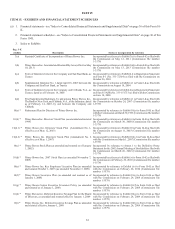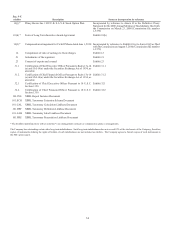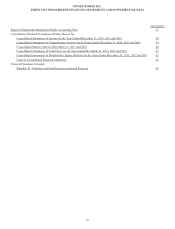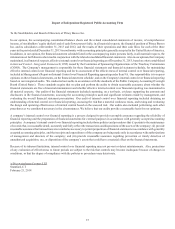Pitney Bowes 2013 Annual Report Download - page 39
Download and view the complete annual report
Please find page 39 of the 2013 Pitney Bowes annual report below. You can navigate through the pages in the report by either clicking on the pages listed below, or by using the keyword search tool below to find specific information within the annual report.28
value of the direct marketing reporting unit exceeded its carrying value by 4%. The goodwill balances related to the software and direct
marketing operations are $684 million and $194 million, respectively. The assumptions used to estimate fair value were based on projections
incorporated in our current operating plans as well as other available information. The inputs used to determine the fair value of the
software and direct marketing operations were classified as Level 3 in the fair value hierarchy. By their nature, projections are uncertain.
Potential events and circumstances, such as declining volumes, loss of client contracts and inability to acquire new clients could have an
adverse effect on our assumptions. We will continue to monitor and evaluate the carrying values of goodwill and intangible assets of
these units, and should actual results differ significantly from our estimates and assumptions, additional non-cash impairment charges
for goodwill could be recorded in 2014.
Stock-based compensation expense
We recognize compensation cost for stock-based awards based on the estimated fair value of the award, net of estimated forfeitures.
Compensation costs for those shares expected to vest are recognized on a straight-line basis over the requisite service period.
The fair value of stock awards is estimated using a Black-Scholes valuation model or Monte Carlo simulation model. These models
require assumptions be made regarding the expected stock price volatility, risk-free interest rate, expected life of the award and dividend
yield. The estimate of stock price volatility is based on historical price changes of our stock. The risk-free interest rate is based on U.S.
treasuries with a term equal to the expected life of the stock award. The expected life of the award and expected dividend yield are based
on historical experience.
We believe that the valuation techniques and the approach utilized to develop the underlying assumptions are appropriate in estimating
the fair value of our stock-based awards. If factors change and we use different assumptions, our stock-based compensation expense
could be different in the future. Estimates of fair value are not intended to predict actual future events or the value ultimately realized by
employees who receive equity awards, and subsequent events are not indicative of the reasonableness of the original estimates of fair
value. In addition, we are required to estimate the expected forfeiture rate and recognize expense only for those shares expected to vest.
If our actual forfeiture rate is materially different from our estimate, stock-based compensation expense could be significantly different
from what we have recorded in the current period.
Restructuring
We have undertaken restructuring actions which require management to utilize certain estimates related to the amount and timing of
expenses. If the actual amounts differ from our estimates, the amount of the restructuring charges could be impacted. On a quarterly basis,
we update our estimates of future remaining obligations and costs associated with all restructuring actions and compare these updated
estimates to our current restructuring reserves, and make adjustments if necessary.
Loss contingencies
In the ordinary course of business, we are routinely defendants in, or party to, a number of pending and threatened legal actions. On a
quarterly basis, we review the status of each significant matter and assess the potential financial exposure. If the potential loss from any
claim or legal action is considered probable and can be reasonably estimated, we establish a liability for the estimated loss. The assessment
of the ultimate outcome of each claim or legal action and the determination of the potential financial exposure requires significant
judgment. Estimates of potential liabilities for claims or legal actions are based only on information that is available at that time. As
additional information becomes available, we may revise our estimates, and these revisions could have a material impact on our results
of operations and financial position.


